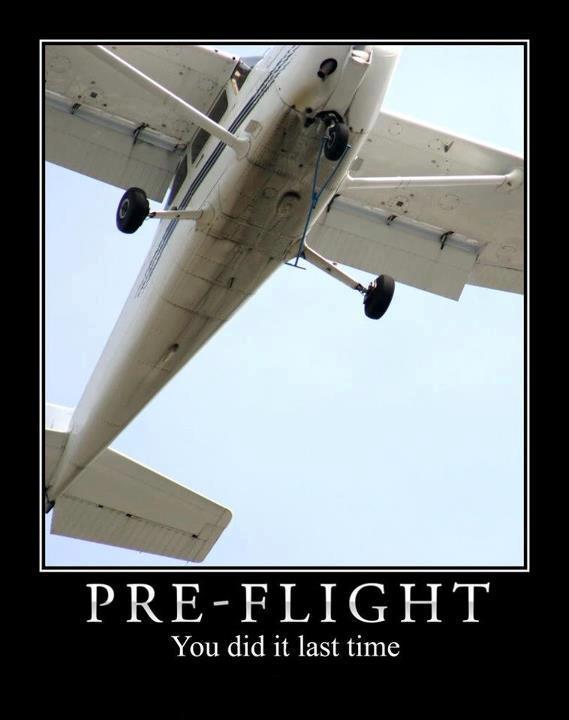VWGhiaBob
Line Up and Wait
- Joined
- Mar 17, 2013
- Messages
- 884
- Display Name
Display name:
VWGhiaBob
How many times do we go through pre-flights routinely, maybe not paying as much attention as we should?
Today, I was reminded just how important they are. Upon pushing the rudder to make sure it was operational, it just didn't feel right...a bit too easy to move. But someone had just flown the plane with no problem.
Being the overly cautious guy I am, I decided I didn't like it, so I did some more testing, including the foot pedals.
Turns out the rental plane had a rudder that the controls would push left, but not right. The cable and spring were all messed up.
This reminds me of how important each and every step of a preflight is, and how we must give our full attention every time.
Would I have made it down with an erratic, one-direction rudder? Maybe, but who knows how controllable the plane would have been.
I squawked the rental plane, went home, and resolved to accelerate my own purchase...and to continue REALLY paying attention to the details during preflight!
Today, I was reminded just how important they are. Upon pushing the rudder to make sure it was operational, it just didn't feel right...a bit too easy to move. But someone had just flown the plane with no problem.
Being the overly cautious guy I am, I decided I didn't like it, so I did some more testing, including the foot pedals.
Turns out the rental plane had a rudder that the controls would push left, but not right. The cable and spring were all messed up.

This reminds me of how important each and every step of a preflight is, and how we must give our full attention every time.
Would I have made it down with an erratic, one-direction rudder? Maybe, but who knows how controllable the plane would have been.
I squawked the rental plane, went home, and resolved to accelerate my own purchase...and to continue REALLY paying attention to the details during preflight!




